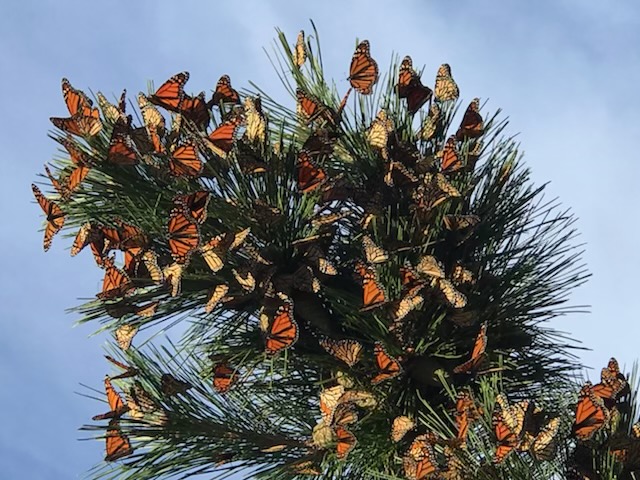Monarch Butterflies only lay their eggs on milkweed. Lots of monarchs can be seen fluttering around the Margate garden.
GLAND, Switzerland Despite valiant efforts to plant milkweed along the monarch butterfly's migration route, the migratory monarch butterfly (Danaus plexippus plexippus), known for its spectacular annual journey of up to 4,000 kilometers across the Americas, has entered the International Union for Conservation of Nature's Red List of Threatened SpeciesTM as endangered and threatened by habitat destruction and climate change.
Today's Red List update highlights the fragility of nature's wonders, such as the unique spectacle of monarch butterflies migrating across thousands of kilometres, IUCN Director General Dr. Bruno Oberle said Thursday in a release. To preserve the rich diversity of nature we need effective, fairly governed protected and conserved areas, alongside decisive action to tackle climate change and restore ecosystems. In turn, conserving biodiversity supports communities by providing essential services such as food, water and sustainable jobs.
The endangered migratory monarch butterfly is a subspecies of the monarch butterfly (Danaus plexippus). The native population, known for its migrations from Mexico and California in the winter to summer breeding grounds throughout the United States and Canada, has shrunk by between 22% and 72% over the past decade. Legal and illegal logging and deforestation to make space for agriculture and urban development has already destroyed substantial areas of the monarchs' winter shelter in Mexico and California, while pesticides and herbicides used in intensive agriculture across the range kill butterflies and milkweed, the host plant that the larvae of the monarch butterfly feed on.
https://youtu.be/5DqbvEQC0TQ
Climate change has significantly impacted the migratory monarch butterfly and is a fast-growing threat; drought limits the growth of milkweed and increases the frequency of catastrophic wildfires, temperature extremes trigger earlier migrations before milkweed is available, while severe weather has killed millions of butterflies.
The western population is at greatest risk of extinction, having declined by an estimated 99.9%, from as many as 10 million to 1,914 butterflies between the 1980s and 2021. The larger eastern population also shrunk by 84% from 1996 to 2014. Concern remains as to whether enough butterflies survive to maintain the populations and prevent extinction.
It is difficult to watch monarch butterflies and their extraordinary migration teeter on the edge of collapse, but there are signs of hope. So many people and organizations have come together to try and protect this butterfly and its habitats. From planting native milkweed and reducing pesticide use to supporting the protection of overwintering sites and contributing to community science, we all have a role to play in making sure this iconic insect makes a full recovery, said Anna Walker, member of the IUCN SSC Butterfly and Moth Specialist Group and Species Survival Officer at the New Mexico BioPark Society, who led the monarch butterfly assessment.
 A family of volunteer plant native plants to attract pollinators, such as Monarch butterflies.
A family of volunteer plant native plants to attract pollinators, such as Monarch butterflies.
Local efforts to plant pollinator plants that are a food source for the monarch butterfly have taken hold in Downbeach communities to support the migration in the eastern United States. Sustainable Downbeach green teams have established pollinator gardens, first in Margate, then Longport, and recently in the Ventnor West area.
Home gardeners are encouraged to plant milkweed and goldenrod to serve as a source of food for the migrating monarch butterfly.
Community volunteers, residents and staff are helping to create a new pollinator and monarch butterfly habitat this summer at the Seashore Gardens Living Center home for the aged in Galloway Township.
 Doug Farrell/Thousands of migrating Monarch butterflies rest in a pine tree at Longport Point.
Doug Farrell/Thousands of migrating Monarch butterflies rest in a pine tree at Longport Point.